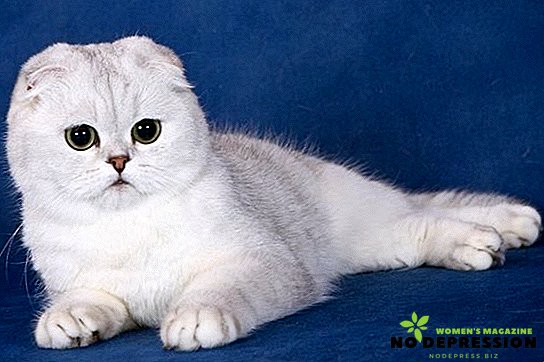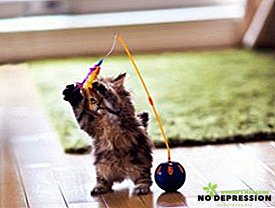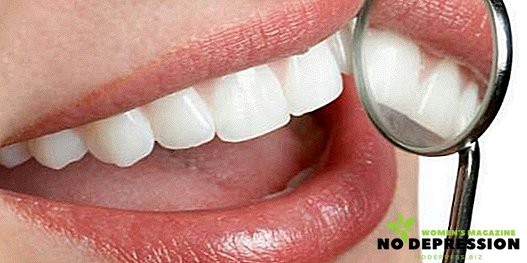Scottish cats are one of the most popular breeds in the world. The owner of a fluffy pet with unusual ears dream to become many lovers of unpretentious in the care of cats.

The breed of lop-eared Scottish cats was first registered in 1959. After another two decades, the North American Cat Lovers Federation adopted the standard for this breed, which is used today. The European International Federation of Scottish cats is not considered a separate breed, which does not make them less popular among breeders and individuals.
Friendly and extremely responsive creatures become loyal friends for both children and adults.
Character lop-eared cats
Scottish Fold cats are mentally balanced and very calm animals. If we are talking about a kitten, then small pranks cannot be avoided, but an adult cat or a cat will never hang on curtains and behave quite peacefully at night.
Cats quickly adapt to the conditions of existence and new owners. They get along well with children, love attention, but they do not impose their society on the owner.
They rarely ask for their own hands, but patiently wait for them to be stroked and released. Cats behave cautiously with small children. Insignificant aggression in the form of hissing and attempts to bite is manifested in relation to strangers. With other animals, cats get along well, even with dogs they know how to establish friendly relations.
Scots love free space, but not picky about their habitat. This is a purely domestic cat that feels great only in the walls of an apartment or house. Outside, calm and non-aggressive animals can easily get lost.
Color and breed features
 Scottish cats have no predominant color. The color of the coat depends a lot on the shade that the kitten's parents had.
Scottish cats have no predominant color. The color of the coat depends a lot on the shade that the kitten's parents had.
Most often, cats are of pure gray color, but in some cases white, black and even chocolate-brown kittens are born.
There is no strict limitation on wool color, therefore this feature is not considered as fundamental in determining the purity of the breed.
Despite the refusal of the European Federation to recognize the existence of such a breed as the Scottish Fold cat, it still exists. A feature of purebred animals is the presence of small ears that are curved to the side of the muzzle. They are so small and so tightly pressed to the head that in some cases it seems that they are not at all. Other breed features include:
- the length of the coat (the coat can be either long or short);
- unpretentious care;
- almost complete omnivorous;
- fear of drafts (the cat may seriously catch a cold);
- susceptibility to diseases such as hemophilia and bronchitis.
An unusual form of ears, for which Scots are valued by breeders, is a gene mutation that causes many animals a lot of trouble and becomes a cause of disability. The result of the appearance of a mutated gene in the cat's body is the development of skeletal anomalies, osteochondrodystrophy and rickets.
A cat or a cat prefer home comfort and silence, because these couch potatoes can practically not let go for a walk.
Scots are quite large. An adult cat weighs up to 8, and a cat up to 4 kilograms.
How to choose a kitten
A kitten needs to be bought at the age of 2-3 months, not older and not younger. By this time, the cat already has the elementary skills of socialization, she received the first vaccinations. If the breeder is trying to sell a kitten that has not reached the age of 2 months, then in such a purchase it is worth doubting, because there is a possibility that the marriage has not yet managed to manifest itself.
The little kitten does not know how to use the tray, he will need special food, and in due time, and vaccination, for which he will have to pay out of his own pocket. In addition, the animal can pick up the infection before vaccination, and in this case, return it to the owner, it is unlikely to succeed.
When choosing a furry friend special attention should be paid to:
 Behavior. The two-month kitten is very active, which is especially pronounced when strangers appear near it. He can arch his back and hiss - this is normal. Much worse, if the baby is hammered into the far corner and does not respond to goodies or calls to play.
Behavior. The two-month kitten is very active, which is especially pronounced when strangers appear near it. He can arch his back and hiss - this is normal. Much worse, if the baby is hammered into the far corner and does not respond to goodies or calls to play.- Appearance. Wool and eyes should shine. Healthy kittens are dry around the eyes and nose. If there are slight leaks, then this is a sign of a lack of vitamins or a cold.
- The shape of the paws and tail. With a slight pressure on the paws of a healthy cat, she does not feel discomfort and does not try to escape. All 4 legs must be inspected, they must be smooth, the kitten must confidently stand on its feet. A healthy cat has a straight tail, there are no knots and bends on it. If there are any and in no way connected with the accidental fall of a kitten, then it is worth thinking about the congenital anomaly, the severity of which was described above.
Before buying, you need to carefully observe all the kittens and choose the most active and "live". It is better to know in advance from the seller everything about this kitten, its taste preferences and character. It will be useful to examine parents, the study of the pedigree and the passport of the animal.
Care Tips
To create a cat comfortable living conditions it is not necessary to buy special equipment (houses, bedding). The fluffy lump with pleasure will use the master's chair or sofa for sleeping. If there is a need and desire, you can make a cat an ottoman from old knitted things and place it near the closet or under the chair. Be sure to have a scraper in the house. It should be high and preferably with multiple levels. Scots love to stretch the full length while turning claws.
Care for the cat itself is as follows:
- claw trimming (done 1-2 times per month);
- massage (1-2 times a week);
- combing (short-haired animals are combed once a week, long-haired - 2 times).
The procedure of combing long-haired animals is given special attention. It is necessary to comb gently, but surely, otherwise tangles are formed from the remaining wool. Trying to get rid of them on their own, a pet can injure itself.

Feeding secrets
They feed cats with fresh food (cereals on broth, boiled sea fish, meat) or special dry food of premium class. Cheap feed is better not to use, the gentle stomach of the cat may suffer. Mixing feed is not recommended.
If the owner feeds the cat only dry food for several months, and then decides to sharply transfer it to fresh food, then this spontaneity can have negative consequences.
From dairy products you can give only low-fat cottage cheese and kefir. The animal will absorb sour cream and cream with great pleasure, but their excessive consumption can lead to liver obesity. You can add boiled yolk or milk to regular porridge.
If the owner is difficult to choose the brand of dry food, contact the veterinarian.
Vaccination, parasite treatment, bathing
Vaccinations are made according to the standard. The first - in 2 months, and the next 1 time per year. Be sure to vaccinate your pet against rabies, plague and hepatitis. Once every 3-4 months you need to give tablets for worms. The dose is calculated based on the weight of the cat.
If there are other animals in the house, the pet often walks or even lives on the street, then it is obligatory to buy a special collar from fleas and ticks. It is rarely necessary to bathe a pet using special shampoos. Scottish water is not afraid, but frequent bathing adversely affects the quality of wool.
Mating
The first mating is allowed not earlier than 1 year. For kittens to be born healthy, one of the crossed animals must have erect ears. This condition is mandatory to fulfill, otherwise the offspring will be unviable. Animals with straight ears are called Skkotish Straight. They are not used for exhibition purposes, but for reproduction we cannot do without them.
Pregnancy lasts up to 9 weeks. The number of kittens is different, it all depends on the particular animal.
Scottish cats are kind and helpful creatures. They easily adapt, do not need special care, rarely get sick and live on average up to 12-15 years.


 Behavior. The two-month kitten is very active, which is especially pronounced when strangers appear near it. He can arch his back and hiss - this is normal. Much worse, if the baby is hammered into the far corner and does not respond to goodies or calls to play.
Behavior. The two-month kitten is very active, which is especially pronounced when strangers appear near it. He can arch his back and hiss - this is normal. Much worse, if the baby is hammered into the far corner and does not respond to goodies or calls to play.









